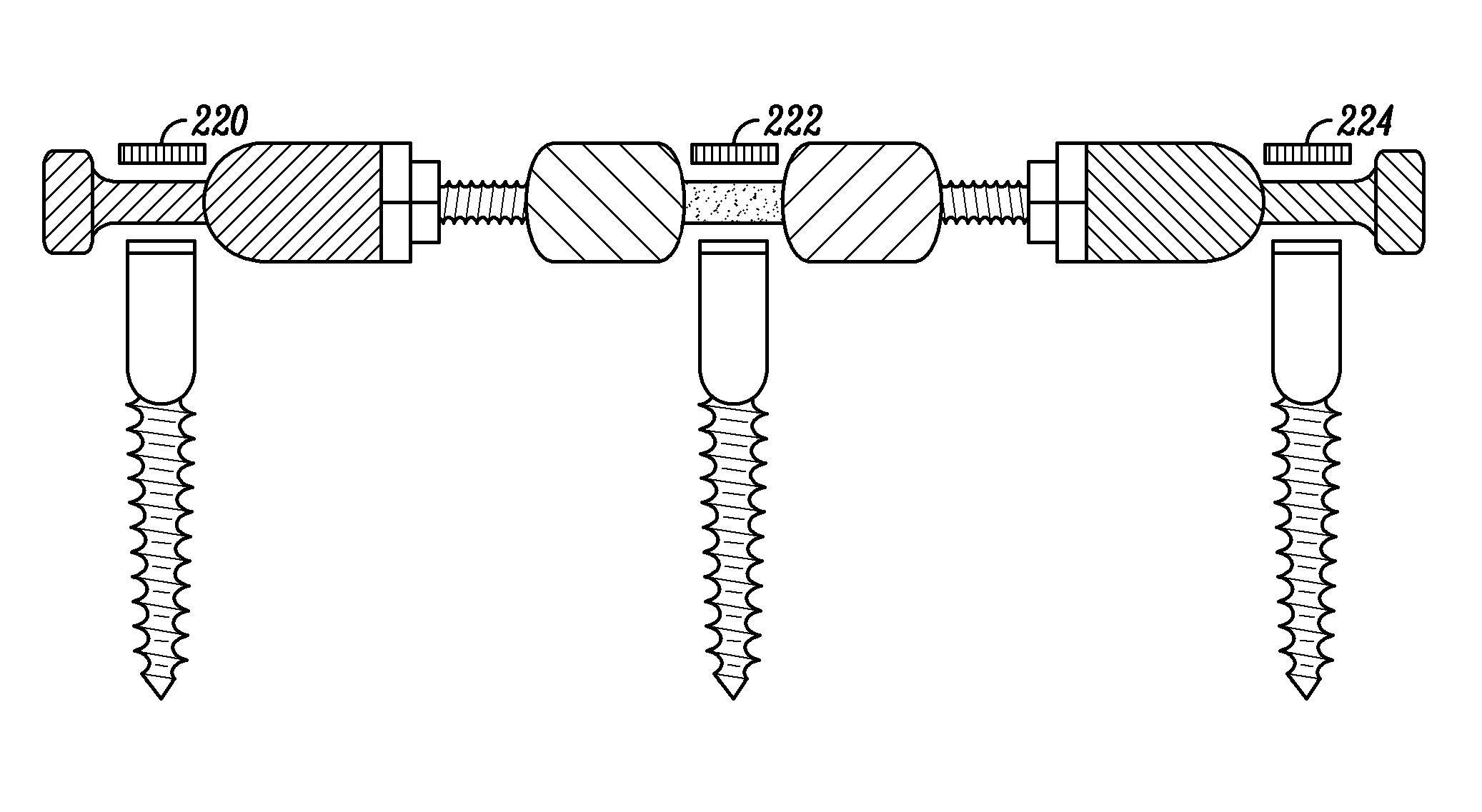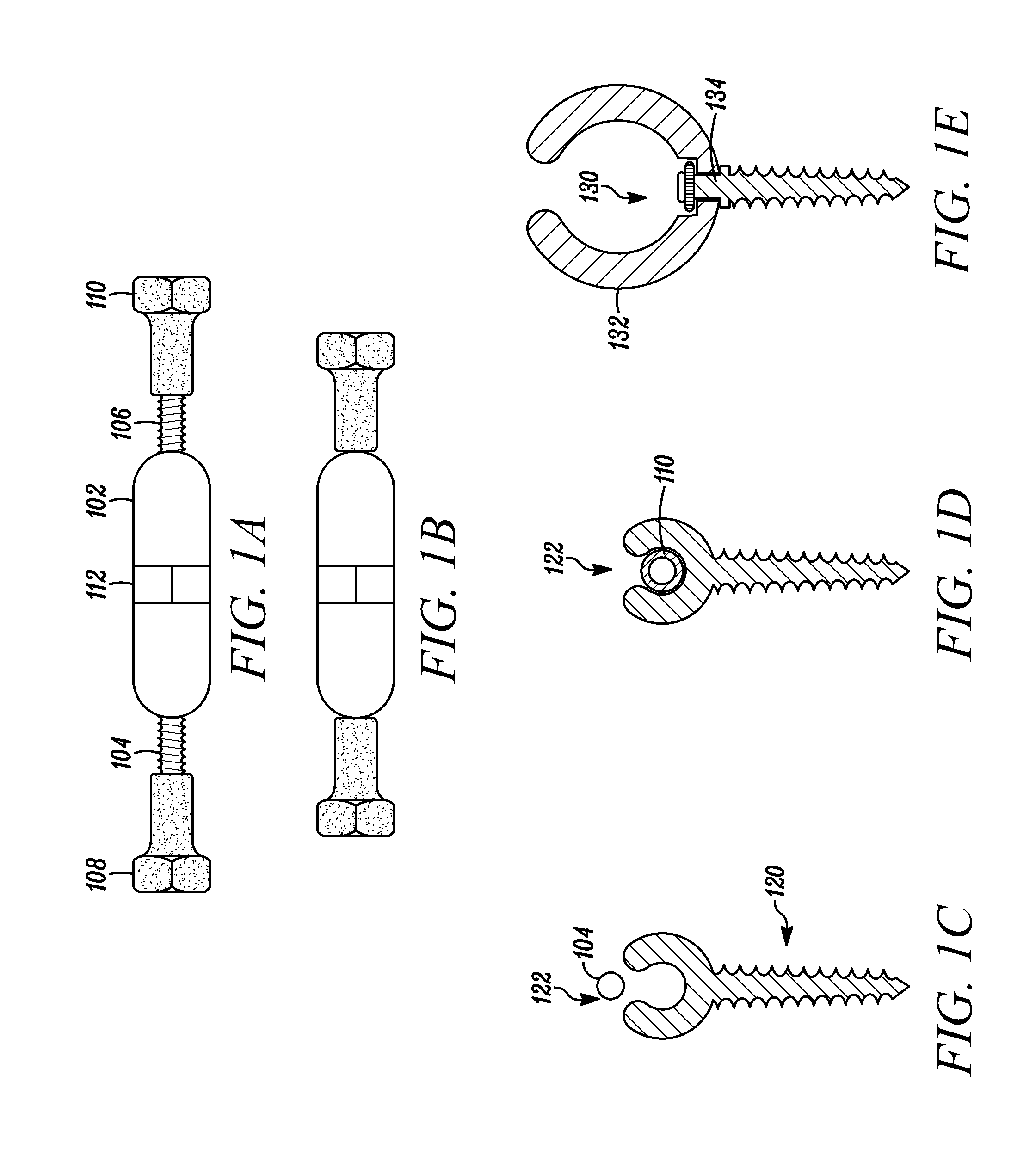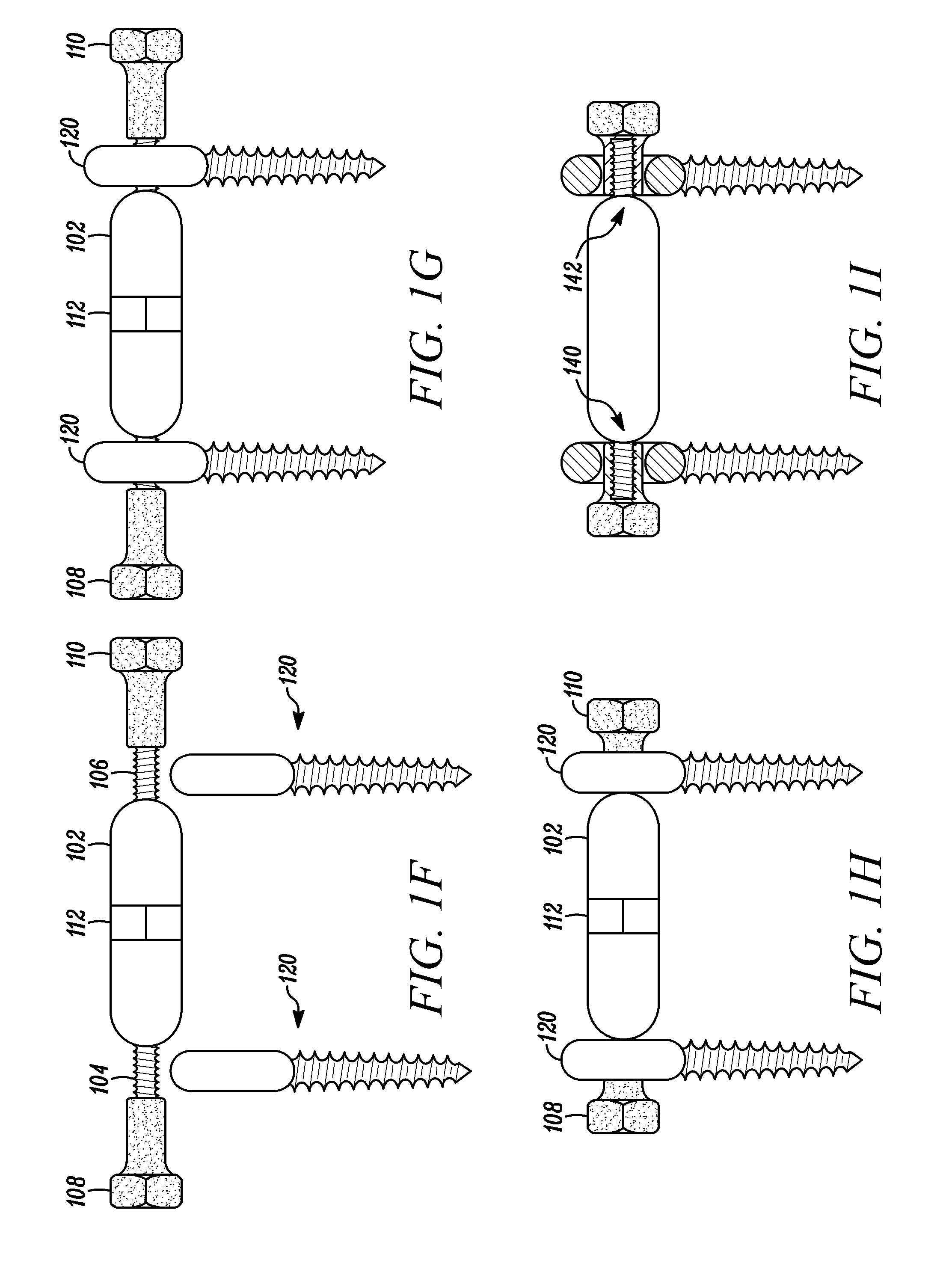Methods and Apparatus for Treating Spinal Stenosis
a spinal stenosis and spinal canal technology, applied in the field of spinal surgery, can solve the problems of increasing causing pain or numbness in the legs, so as to facilitate spinal flexion, and reduce the risk of laminectomy.
- Summary
- Abstract
- Description
- Claims
- Application Information
AI Technical Summary
Benefits of technology
Problems solved by technology
Method used
Image
Examples
Embodiment Construction
[0260]FIG. 1A is a lateral view of a three-component device used to treat spinal stenosis, drawn in its extended position. The central rod component 102 is threaded 104, 106 on both ends. One end of the component has left-handed threads. The other end of the rod component has right-handed threads. Bolt-like components 108, 110 are threaded onto the ends of the rod component. As discussed in further detail below, the rod component is coupled to pedicle screws then adjusted to force the screws apart. This permits spinal flexion, but limits spinal extension, thereby distracting the spine and enlarging the spinal canal.
[0261]FIG. 1B is a lateral view of the device of FIG. 1A drawn in its contracted position. Tools are used to prevent rotation of the end components. A wrench may be used to rotate the rod component placed on flats 112. Rotating the rod component, while preventing rotation of the end components, causes the end components to advance along the treaded portions of the rod, si...
PUM
 Login to View More
Login to View More Abstract
Description
Claims
Application Information
 Login to View More
Login to View More - R&D
- Intellectual Property
- Life Sciences
- Materials
- Tech Scout
- Unparalleled Data Quality
- Higher Quality Content
- 60% Fewer Hallucinations
Browse by: Latest US Patents, China's latest patents, Technical Efficacy Thesaurus, Application Domain, Technology Topic, Popular Technical Reports.
© 2025 PatSnap. All rights reserved.Legal|Privacy policy|Modern Slavery Act Transparency Statement|Sitemap|About US| Contact US: help@patsnap.com



